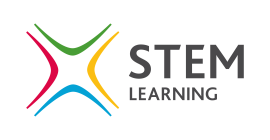- View more resources from this publisher
 National STEM Learning Centre and Network
National STEM Learning Centre and Network
Blog
Purpose: Observing changes over time can result in the collection of a lot of data. One method of keeping a central record for the class is to set up a blog or a wiki for the duration of the investigation where photographs, measurements, results tables and graphs can be collated. Using a digital record rather than paper based record allows the automation of certain functions, such as date stamping or text searching, and also enables data processing and reporting to be completed more effectively. Most blog or wiki sites are free to use, and if designed for education, allow configuration to regulate access.
Teaching approach: Depending on the duration of the investigation, different pairs of students could be given editorial rights to the blog during different weeks. For shorter term projects, all students could be given access, but different groups made responsible for entering different types of data.
Preparation: Creation of a blogging site is usually free, and takes little time or experience. Choosing a provider specifically for education provides safeguarding measures, but it is necessary to check school policies before enabling social networking to take place as part of lessons.
Example of educational blogging site:
- https://edublogs.orgExample of a blog used to support a long term practical activity (see page 15 of the pdf)
- http://www.science-on-stage.de/images/downloads/iStage_English.pdf
Show health and safety information
Please be aware that resources have been published on the website in the form that they were originally supplied. This means that procedures reflect general practice and standards applicable at the time resources were produced and cannot be assumed to be acceptable today. Website users are fully responsible for ensuring that any activity, including practical work, which they carry out is in accordance with current regulations related to health and safety and that an appropriate risk assessment has been carried out.




